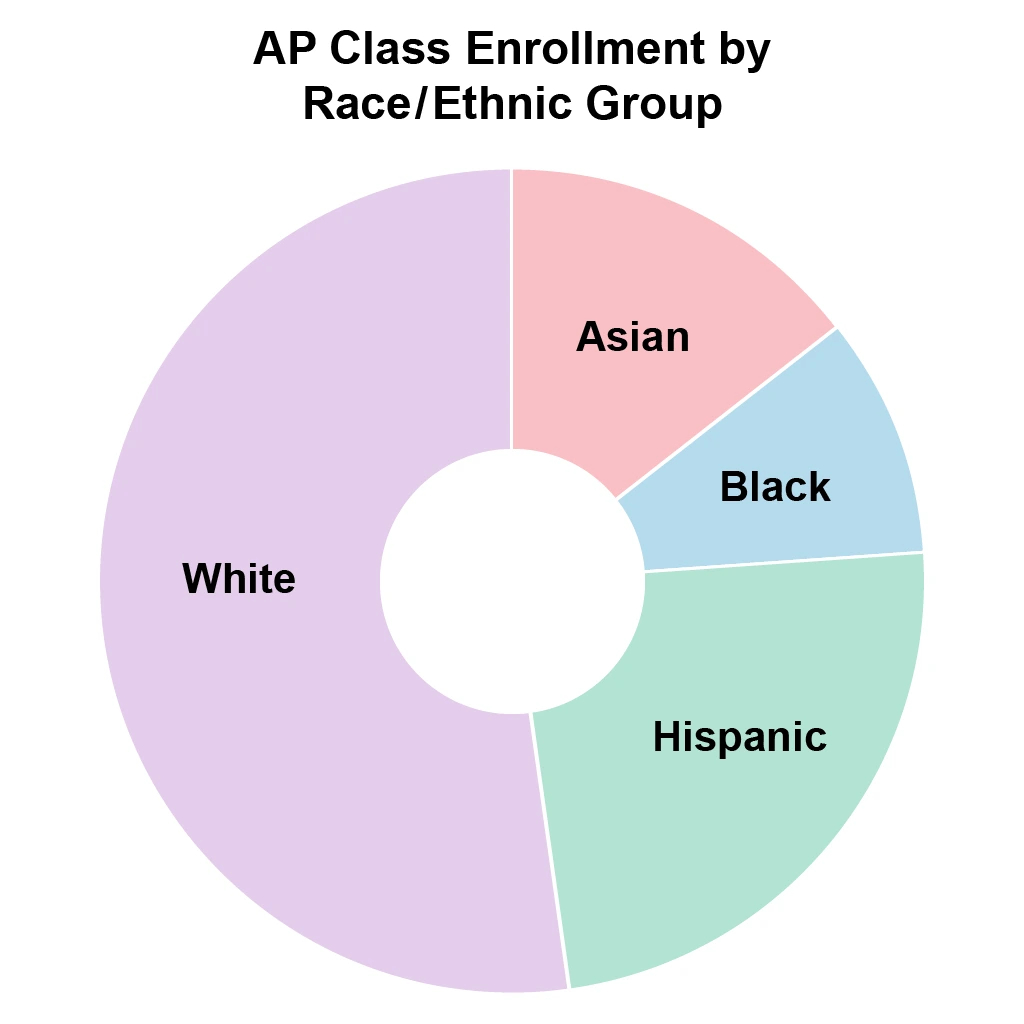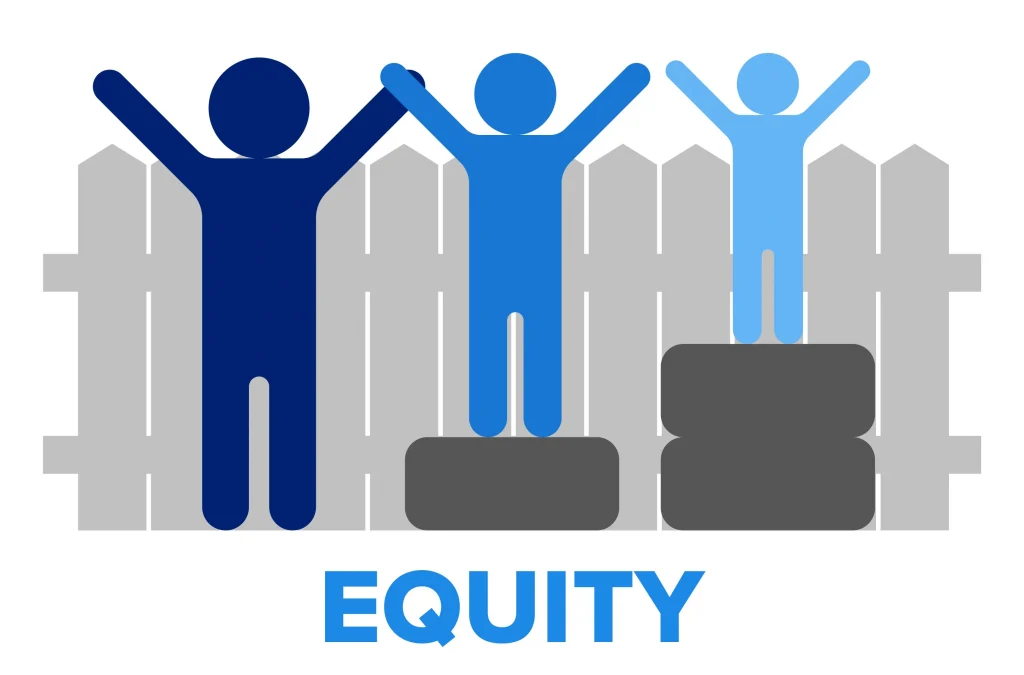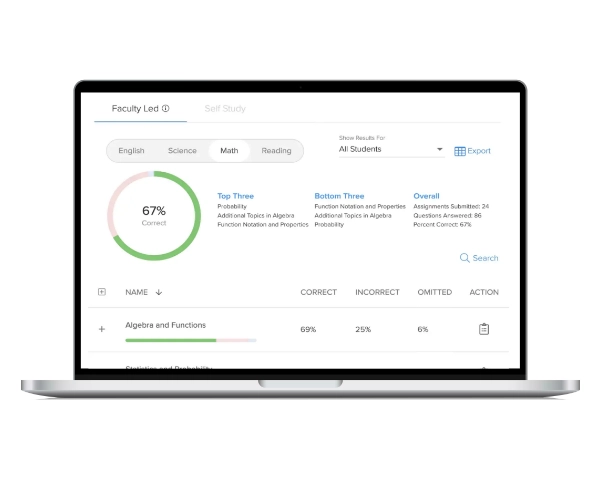Just five minutes in a social media group for educators will demonstrate one specific thing about teachers–they love their students and will move mountains to ensure they all succeed. Yes, all of them. Even that one kid who draws rude pictures on his desk with a Sharpie has been supported by teachers who want to prepare him for college–and they do this by providing equitable opportunities to take on academic challenges.
AP Enrollment = Greater Opportunities for Success
It has long been established that when students take challenging courses in high school, they are more likely to succeed in college. Advanced Placement® (AP) classes prepare students for college-level work, giving them an edge in the admissions process. Students can also potentially earn college credits with AP courses, which can save on the total cost of higher education.
“The pathway toward college and career success begins with a rigorous high school academic experience,” confirms Kenny Tucker, an assistant principal in Georgia’s Henry County School District. With a decade’s-worth of experience as an AP U.S. History teacher, Kenny believes “taking AP courses is a key indicator that students have invested in their own intellectual development and are well-prepared for post-secondary endeavors.”
It comes as no surprise, then, that high school students in AP courses have higher graduation rates. And so, we must ask the question; how can we ensure AP access for all students?
Leveling the Playing Field with AP Accessibility
Dixie Ross, Lead Teacher of AP Mathematics at Plugerville High School, has given this question a lot of thought. “Every student should have the option and opportunity to ‘take on’ challenging coursework in their areas of talent and interest. We should not think of these classes as a privilege, but rather, as the right of all students to an appropriate education.”
Ross is not alone in her assertion that all students should have access to challenging academics, such as the coursework found in AP classes. This is a passion point for many educators, including Tucker. He concurs with Ross, emphasizing the importance of eliminating barriers to entry by “providing necessary supports for underrepresented students and nurturing a sense of academic confidence in the AP environment.”
Unfortunately, providing AP access for all students has encountered its own set of challenges and there is still room for improvement. According to a 2021 report from the Center for American Progress (CAP) and a longitudinal study from the National Center for Education Statistics (NCES), there are extensive equity gaps when it comes to the availability of AP courses, and Black, Latinx, and Indigenous students are less likely to enroll in them. Furthermore, when these groups of students do enroll in AP classes, they are less likely to score a passing 3, 4, or 5 on the exams than their peers.

While this isn’t an issue that falls entirely in the laps of educators, there are some steps they can take to increase the likelihood that the diversity of their school’s student population is reflected in the AP classes they offer.
Making a Shift with Open Enrollment
“Mainly we need to change the attitudes of teachers, counselors, and school leaders who still see AP as a ‘bonus,’ or extra credit that only certain students can access,” said Ross, who is also a College Board® consultant. “We need to make AP or other challenging coursework a more universal experience. To do this, we need to provide teachers with support in the form of resources and training that will allow them to meet the needs of a broader range of students.”
Laura Maddaford, an AP educator in Arlington ISD, agrees. “AP courses are an opportunity for students to encounter college-level material in a supportive environment. As these classes challenge students to grow as critical thinkers, it can often be scary for students, and high schools have frameworks already in place to provide extra supports that help diminish that fear. Pedagogically, high school students will have more opportunities for low stakes failures that they can then learn from without facing the financial penalties of dropping or having to retake a class at college.”The College Board believes educators must make “equitable access” a guiding principle for their AP programs by giving all willing and academically prepared students the opportunity to participate in the courses. According to the College Board website, schools are encouraged to eliminate barriers that prevent AP access for all students from “ethnic, racial, and socio-economic groups that have been traditionally underserved,” and should make sure their classes “reflect the diversity of [the] student population.”
According to The College Board, equity and access to challenging coursework before a student enrolls in AP is important, as that is what will prepare them for AP classes and increase their chances for success.
Diversity Matters
Ensuring AP classes reflect the diversity of the overall student body often requires active recruitment of underrepresented AP students, including those who fall into low-income and minority categories. Districts and schools must not only work with students to place them in appropriate courses, but must also work to make sure their schools offer courses that reflect their student populations.
For the first time in academic history, high school students across the nation now have the option to take an African American Advanced Placement course. As part of the College Board’s latest pilot program, 60 U.S. schools are offering this new AP class as part of their fall curriculum. The African American course is the College Board’s first class since 2014 and could potentially impact thousands of high school students who choose to enroll in it.
Helping All Students Succeed
At UWorld, our Learning Tools for AP Courses are designed to help all AP students succeed. AP courses clearly offer opportunities for students. They provide a chance to put a high bar in front of themselves, allowing them to rise to the occasion. These students get to show their school, community, and themselves that they can learn complex content and apply that knowledge. If a student has an interest or an aptitude in a specific area, then regardless of background, educators should feel a responsibility to encourage them to take on a challenge and enroll in an AP course.
UWorld recently held a webinar, “Equity in Your School or District,” which featured three presenters helping educators discover the right tools and best practices used to create an equitable AP program. The panel featured both Tucker and Ross. It also featured Laura Maddaford, who actively uses UWorld Learning Tools for AP courses in her high school classroom. To register for the archived webinar, visit this link.




